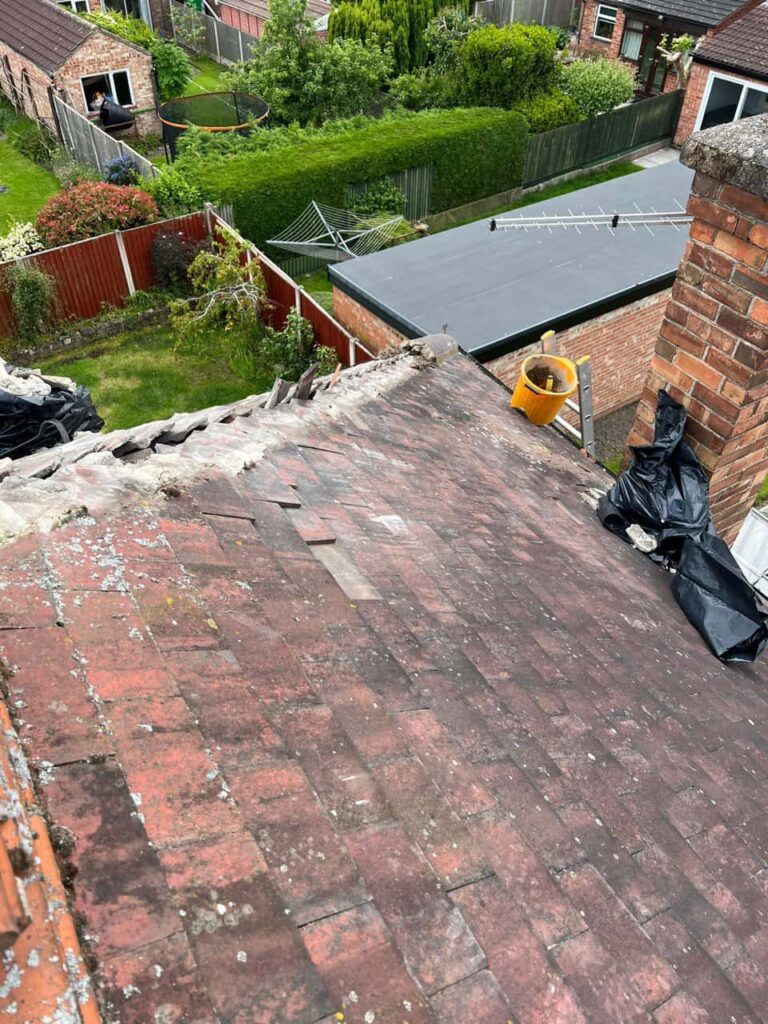When designing or upgrading the roof of a large, multi-storey home, the style of roof plays a crucial role in both the aesthetic and structural integrity of the building. One of the most popular and effective roof styles for larger homes is the hip roof. Known for its strength, durability, and architectural appeal, the hip roof is a top choice for homeowners looking to enhance their property’s value and functionality. At Selsey Roofing Repairs, we specialise in the installation and maintenance of hip roofs in Selsey, West Sussex, and beyond.
In this blog post, we’ll explore the key advantages of hip roofs and why they are a perfect match for large, multi-storey homes.
1. Enhanced Stability and Wind Resistance
One of the standout benefits of hip roofs is their superior stability, particularly in areas prone to high winds or storms. Unlike gable roofs, which have two sloping sides and two vertical walls, a hip roof has slopes on all four sides, meeting at a central ridge. This design creates a sturdier structure that can withstand high winds more effectively, distributing the pressure evenly across the roof.
Why It Matters: For large, multi-storey homes, especially in areas like Selsey where coastal winds are common, the enhanced wind resistance of a hip roof ensures better protection against the elements. This structural strength reduces the risk of wind damage, making it a safer option for homeowners.
2. Improved Drainage and Weather Protection
The sloping design of a hip roof allows for excellent drainage, as rainwater and snow can easily slide off all four sides of the roof. This reduces the likelihood of water pooling and minimises the risk of leaks and water damage to the roof structure. In addition, hip roofs tend to be more stable in snowy or rainy climates due to their ability to shed precipitation quickly.
Why It Matters: For multi-storey homes, where roof maintenance can be more challenging, having a roof that naturally encourages water drainage is a major advantage. By preventing water accumulation, a hip roof extends the lifespan of the roofing materials and protects the home’s interior from potential water damage.
3. Aesthetic Appeal for Large Homes
In terms of architectural design, hip roofs are highly versatile and complement a wide range of house styles. For large, multi-storey homes, a hip roof adds an element of grandeur and symmetry, enhancing the overall appearance of the property. The even slopes on all four sides give the home a balanced and elegant look, which can significantly boost curb appeal.
Why It Matters: For homeowners looking to increase the aesthetic value of their property, especially for large homes with a strong architectural presence, a hip roof offers a refined and timeless design that elevates the home’s visual impact.
4. Increased Structural Integrity
The design of a hip roof naturally lends itself to increased structural integrity. The inward slope of all four sides means that the roof is better supported than other styles, such as gable roofs. This added strength makes hip roofs more resistant to sagging or collapse, especially on larger homes that may have more expansive roof surfaces.
Why It Matters: For large, multi-storey homes, ensuring the structural integrity of the roof is paramount. A hip roof offers long-term stability, reducing the need for frequent repairs and providing peace of mind for homeowners.
5. Maximising Usable Loft Space
Another advantage of hip roofs is the potential to create usable loft or attic space. While the sloping sides do reduce the total amount of interior space compared to other roof styles, the central ridge of a hip roof often leaves room for a functional loft area. This can be used for storage, additional living space, or even a skylight installation to enhance natural light.
Why It Matters: For large homes, the ability to maximise space is always a plus. A hip roof not only adds structural benefits but can also provide additional usable space within the home, adding both value and practicality.
6. Energy Efficiency
Hip roofs can also contribute to better energy efficiency in large homes. The design of a hip roof allows for improved ventilation, which can help regulate indoor temperatures and reduce energy costs. Proper ventilation and insulation in a hip roof can prevent heat from escaping in the winter and keep the home cooler in the summer.
Why It Matters: For homeowners seeking to lower energy costs and increase comfort in a large home, a well-ventilated hip roof can help maintain a stable indoor environment, reducing the strain on heating and cooling systems.
Conclusion
Hip roofs offer a range of advantages that make them an excellent choice for large, multi-storey homes. From enhanced stability and weather protection to improved aesthetics and energy efficiency, this roof style is both functional and visually appealing. At Selsey Roofing Repairs, we are experts in the installation and maintenance of hip roofs, ensuring that your home is not only protected but also enhanced in style and value.
Call us on: 01243 957 296
Click here to find out more about Selsey Roofing Repairs
Click here to complete our contact form and see how we can help with your roof.

